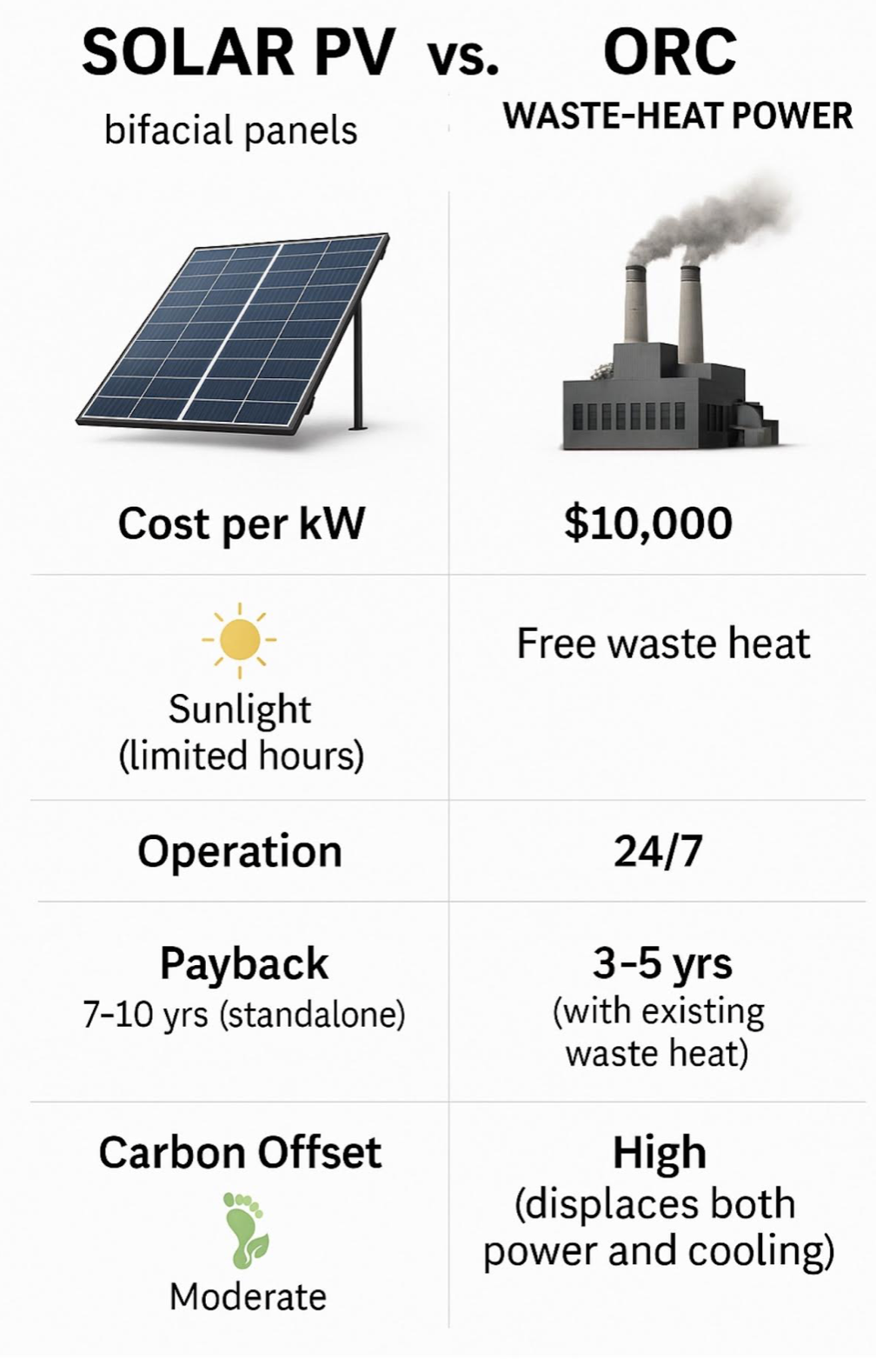
The Power of Waste Heat: Why ORC Systems Outperform Solar PV in Industrial Applications
In the clean energy landscape, solar PV panels often take the spotlight for renewable electricity generation. However, in industrial and data center settings where waste heat is abundant, the Organic Rankine Cycle (ORC) system delivers a compelling alternative. While the upfront cost per kilowatt for ORC is higher, its ability to generate power continuously from waste heat makes it an exceptional technology for 24/7 operations.1. Understanding the Cost DifferenceAt first glance, the price difference between solar PV and ORC appears dramatic. Bifacial solar panels typically cost around 300 dollars per kilowatt, while ORC systems cost about 10,000 dollars per kilowatt. However, the key distinction lies in the fuel source. Solar panels rely on sunlight, which is intermittent and available only during daytime hours. In contrast, an ORC system utilizes free waste heat that would otherwise be lost to the atmosphere. This transforms what was once an expense into a revenue-generating asset.2. Continuous Operation AdvantageSolar PV systems generate electricity only during daylight hours and are subject to weather fluctuations. ORC systems, on the other hand, run continuously. They convert waste heat from industrial processes, power plants, or data centers into clean electricity 24 hours a day. This constant operation increases overall energy efficiency and reduces the need for backup systems or grid dependency.3. Payback and Financial ReturnWhen evaluating any power system, payback period is critical. Solar PV installations typically take 7 to 10 years to achieve full payback when operating as standalone systems. ORC systems, by contrast, can reach payback in just 3 to 5 years when installed in facilities with existing waste heat streams. This accelerated return is due to the fact that the energy source is free and already available, and the system operates without consuming additional fuel.4. Carbon Reduction and ESG ImpactRecovering waste heat through ORC technology contributes directly to carbon reduction goals. Every kilowatt of electricity generated through waste heat recovery offsets the need for additional fuel combustion. This results in a higher carbon offset compared to solar PV, which only displaces grid power during daytime hours. ORC systems also reduce the thermal pollution from vented heat, enhancing both environmental and operational sustainability.5. Complementary TechnologiesRather than viewing solar PV and ORC as competitors, many facilities are now combining them. Solar panels can provide daytime generation while ORC systems supply base-load power from thermal sources. When paired with energy storage, such as a saltwater battery system, the combined configuration delivers a balanced renewable solution that reduces energy costs and emissions around the clock.6. Key Comparison Summary| Feature | Solar PV | ORC Waste-Heat Power || ----------------| -----------------------| ------------------------------------- || Cost per kW | 300 dollars | 10,000 dollars || Fuel Source | Sunlight (limited hours) | Free waste heat || Operation | Daytime only | 24/7 continuous || Payback | 7–10 years | 3–5 years || Carbon Offset | Moderate | High (displaces both power and cooling) |7. The Circular Energy MindsetThe concept behind ORC waste-heat power fits perfectly within the emerging circular energy economy. Every industrial process generates heat, and traditionally that heat is vented or cooled at additional cost. ORC systems recover this energy, transforming it into power that can be reused or sold back to the grid. This closed-loop principle creates efficiency, reduces operating costs, and aligns with corporate sustainability and ESG goals.ConclusionSolar PV panels remain an excellent option for renewable power generation, especially in distributed applications. However, for industries or facilities already producing significant waste heat, ORC systems unlock a hidden source of clean, continuous energy. The higher initial cost is offset by 24-hour operation, faster payback, and greater environmental impact.Every BTU deserves a second life.
